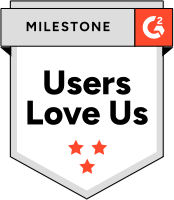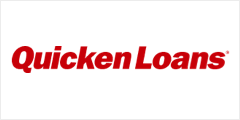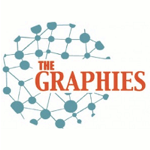Benefits of Business Process Automation (BPA): A Comprehensive Guide to Improved Efficiency and Productivity
In today’s competitive business landscape, organizations are constantly seeking ways to optimize their operations, reduce costs, and improve efficiency. Business Process Automation (BPA) emerges as a critical solution, offering a transformative approach to streamlining workflows, eliminating manual tasks, and driving overall business performance. CMW Lab provides a comprehensive business process automation software solution covering all business process management bpm steps from analysis and modeling to automation and reporting. The automation process is geared toward designing and implementing software applications to automates business routine tasks from initiation to execution and completion, while obtaining enterprise-wide business process efficiency streamlining processes complex. CMW Lab helps companies to realize their specific needs in increasing efficiency with low-code development.
Understanding Business Process Automation (BPA)
Business Process Automation (BPA) involves leveraging technology, particularly business process automation software, to automate repetitive, manual tasks and processes within an organization. This includes automating tasks like data entry, invoice processing, customer onboarding, and other routine operations. The goal of BPA is to free up employees from these manual processes, allowing them to focus on more strategic, value-added activities that drive innovation and growth. Benefits of business process automation include improved efficiency, reduced costs, and increased accuracy.
CMW Lab business process automation solution is based on the innovative ElasticData technology and allows non-technical users to design, run and modify business processes with drag-and-drop simplicity and minimizes dependency on IT staff.
In addition to business process automation platform, CMW Lab provides systems by dint of comprehensive data governance that allows handling of business data inseparably from business processes.
CMW BPA software empowers your organization to:
- Improve business operations performance
- Enhance visibility into business processes
- Reduce costs and risks of malfunctioning processes
What industries can benefit from BPA platforms the most?
BPA benefits organizations of all sizes, from smaller businesses to large enterprises.Without exaggeration, businesses of all sizes and across all industries can benefit from BPM and BPA platforms. Several prominent examples of verticals that massively tap into the power of BPA include:
To ensure workflow automation, business process analytics, and an efficiency increase in addition to other significant benefits, companies integrate ERP systems, BPM software, and CRM platforms into their digital infrastructures.
Implementing BPA: A Step-by-Step Approach
Implementing BPA requires a structured approach to ensure success. Here’s a typical process:
- Process Assessment: Identify processes that are suitable for automation. Look for processes that are repetitive, manual, and prone to errors.
- Process Mapping: Document the current state of the process, including all steps, stakeholders, and data flows.
- Design the Automated Process: Design the automated process, specifying how technology will be used to streamline each step.
- Select BPA Tools: Choose the right BPA tools and technologies to support the automated process. Consider factors like scalability, user interface, integration capabilities, and cost.
- Implementation: Build and deploy the automated process. This may involve configuring BPA software, developing custom integrations, and training employees.
- Monitoring and Optimization: Continuously monitor the automated process to identify areas for improvement.
Frequently asked questions
What is Business Process Automation (BPA) and Why Does it Matter?
Business Process Automation (BPA) is the use of software and automation tools to perform repetitive business processes without human meddling. By using BPA software companies can automate tasks that typically requires manual handling, allowing employees to focus on higher-value work. BPA comprises various tools and platforms that work together to handle everything from data processing to task delegation, making it invaluable for organizations seeking to achieve digital transformation.
Selecting the Right BPA Software
Choosing the right BPA software is crucial for successful BPA implementation. Consider the following factors when evaluating BPA software solutions:
- Ease of Use: The software should be easy to use for both technical and non-technical users. Look for features like drag-and-drop interfaces and pre-built templates.
- Integration Capabilities: The software should integrate with existing systems and applications, such as CRM, ERP, and accounting software.
- Scalability: The software should be able to scale to meet the evolving needs of the business.
- Security: The software should provide robust security features to protect sensitive data.
- Cost: The software should be affordable and provide a good return on investment.
Best Practices for Implementing BPA Software
Successful BPA implementation requires a strategic approach to process mapping, training, and integration. First and foremost, automation should be applied to processes, those with large amounts of information or customer servicing processes. BPA features for process modeling allow to demonstrate and agree on the sequence of actions before putting them into automation, which minimizes the issues during implementation. Equipping the employees with the necessary tools and promoting the culture of the organization with ongoing improvement focus is important for the best use of the BPA.
Key BPA Tools and Technologies
BPA leverages a variety of business process automation tools and technologies to achieve its goals. Some of the key components include:
- Workflow Automation Software: This type of process automation software is used to design, model, and automate workflows.
- Robotic Process Automation (RPA): Robotic process automation (RPA) involves using software “robots” to automate repetitive tasks that are typically performed by humans.
- Business Process Management (BPM) Suites: These comprehensive platforms provide a range of tools for modeling, automating, and managing business processes.
- Integration Platforms: These platforms integrate with existing systems and applications, enabling seamless data exchange and process flow.
How BPA Software Integrates with Other Business Applications
Integration is a critical component of effective BPA software, allowing seamless connectivity with ERP, CRM, and other software applications. By integrating with existing systems, BPA platforms centralize data and streamlining processes, creating a cohesive environment where every department can access relevant information in real-time. Many BPA platforms include APIs and pre-built integrations, making it easy for companies to automate repetitive tasks across departments, enhancing workflow automation and data visibility throughout the organization.
Benefits of BPA
The benefits of business process automation are numerous and can have a significant impact on an organization’s bottom line. Some of the key benefits include:
- Improved Efficiency: BPA increase efficiency by automating complex and repetitive tasks, freeing up employees to focus on more strategic activities.
- Reduced Costs: BPA reduced costs by eliminating manual labor, reducing errors, and improving operational efficiency.
- Increased Accuracy: BPA minimizes errors by automating tasks and eliminating human intervention.
- Enhanced Customer Service: BPA can improve customer service by automating customer interactions, providing faster response times, and improving the overall customer experience.
- Improved Compliance: BPA can help organizations comply with regulations by automating compliance-related tasks and providing audit trails.
How Does BPA Software Transform Business Workflows?
With BPA software, business processes undergo change through automation of any manual tasks and time-consuming activities from simple data entry to complex workflow automation as well as allowing the processes to proceed uninterrupted and without supervision. Advanced BPA platforms include workflow automation tools that streamlining processes and allow teams to monitor performance in real-time, ensuring that businesses maintain optimal efficiency. Through process mapping and modeling, BPA software also helps organizations visualize and refine workflows for maximum productivity.
What Key Features Should BPA Tools Include?
When selecting a BPA tool, look for features that support seamless automation, integration, and process optimization. An ideal BPA platform should include low-code or no-code options, allowing non-technical users to create workflows using drag-and-drop functionality. Advanced features like artificial intelligence (AI) and process mining further enhance BPA tools by enabling intelligent automation, which identifies process bottlenecks and suggests improvements. Robust BPA software solutions also integrate with existing business apps, streamlining processes data flow across departments and ensuring data and information are centralized.
How BPA Software Empowers Small Businesses
BPA software isn’t just for large corporations; small businesses can also leverage these tools to enhance operational efficiency. For small businesses, BPA software offers an affordable solution to manage tasks such as data processing, customer support, and employee onboarding. With easy-to-use, customizable tools, BPA software can be tailored to meet specific business needs, helping small businesses reduce costs, improve customer satisfaction, and optimize business processes without requiring extensive technical support.
Workflow Automation vs. Robotic Process Automation (RPA)
Understanding the difference between workflow automation and RPA helps businesses to make the right choices in automating certain processes, choosing the most effective and efficient means for each task. Workflow automation and Robotic Process Automation (RPA) are distinctly different but highly useful aspects of BPA. Managing interdependent tasks within a workflow process is the aim of workflow automation in general. RPA, on the other hand, is when software-based robots perform repetitive and high-volume activities such as filling forms in databases or performing transactions.
Top Business Process Automation Software Tools in 2025
In 2025, the market for BPA software is thriving, with various tools offering unique features tailored to business needs. Leading platforms such as SAP BPA and CMW Lab’s business process automation software provide robust automation solutions for complex business processes. These top BPA tools include workflow design, integration options, and customizable templates that allow companies to tailor the platform to specific business processes. By investing in top BPA software, businesses can automate repetitive tasks, streamlining processes workflows, and achieve process optimization across departments.
Conclusion
Business Process Automation is a powerful tool for organizations looking to improve efficiency, reduce costs, and drive growth. By automating repetitive tasks and processes, organizations can free employees up to focus on more strategic activities, improve customer service, and enhance overall business performance. With the right BPA tools and a well-planned implementation strategy, BPA can transform the way businesses operate and achieve significant results. This makes BPA solution a key investment for any organization looking to stay competitive in today’s fast-paced business environment.
































